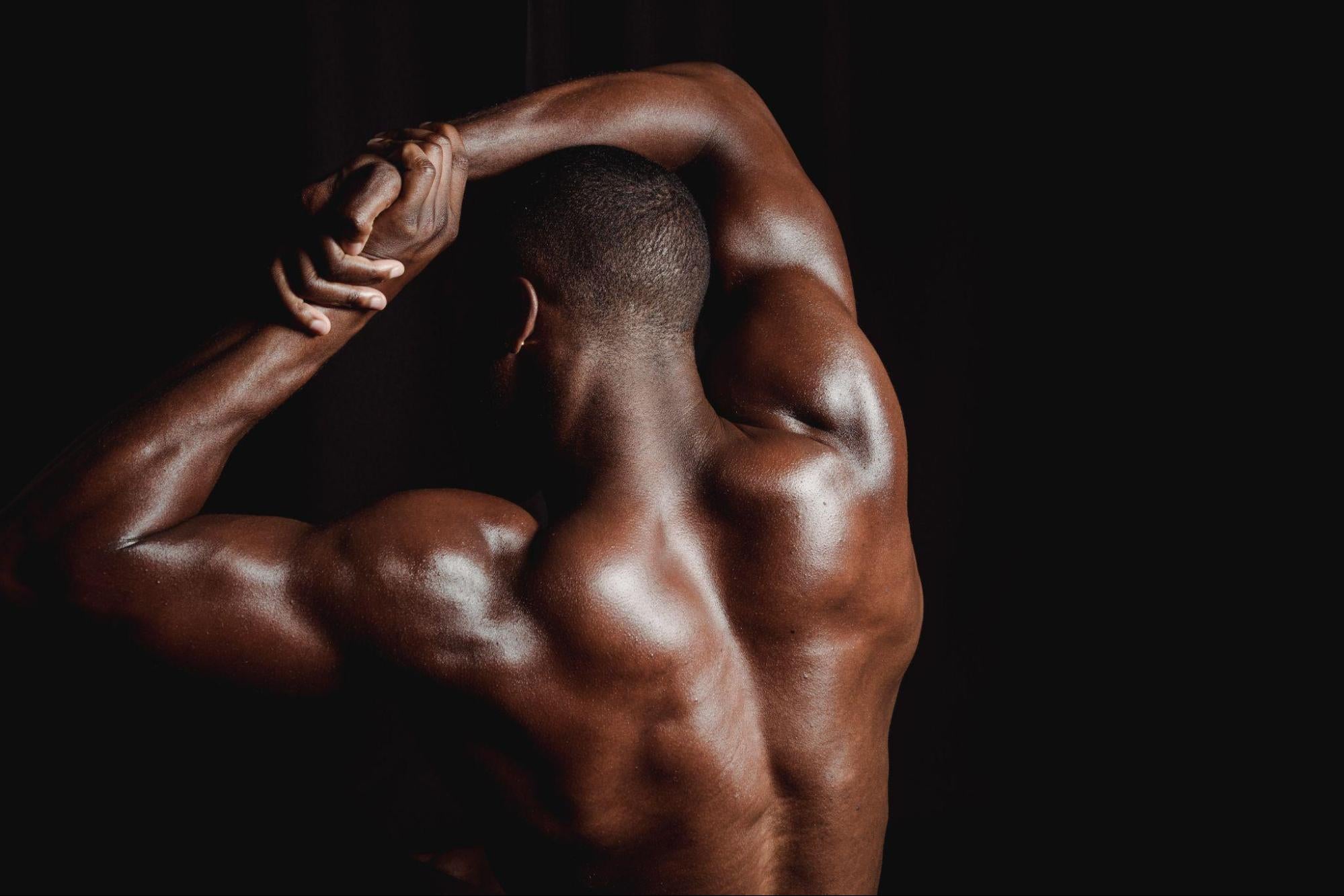Are you looking to fill out your frame and build bigger traps? Are you hitting the gym, but having trouble seeing the results in your shoulders and back? If so, this blog post is for you! We are going to look at how better form can help make a big difference when trying to target those muscles. We will also be exploring necessary nutrition tips needed for effective muscle growth, how often you should train for optimal results, and even some helpful exercises that will guarantee bigger traps along with strength gains.
What Are Trap Muscles?
Trap muscles are an important muscle for both form and function, but it is often overlooked. Gaining size and strength in your traps gives you that classic bodybuilder look, but it also aids in maintaining good posture, facilitating efficient movement, and contributing significantly to your heavy lifting. The 'Trapezius' muscle, which runs from the base of your neck across your shoulders and down to the middle of your back, is referred to as the traps. It's a superficial muscle that covers a large portion of your upper back, making it easy to spot those crucial gains!
Related Link: The Best Chest Workout Routine Guide
What do Traps Do?
Although it has a limited range of motion, the trapezius muscle is vital for several important body functions, including supporting head, shoulder, and torso movements, keeping the spine stable, and maintaining an upright stance.
Should You Train Your Traps?
While working on your back will help strengthen and grow your traps, it may not be enough development of the traps on its own depending on your goals. The traps, like any other muscle, should be worked as part of a well-rounded training program, with an emphasis on progressive overload and strength across a range of exercises.
Are you looking for dependable performance-optimizing gummies to help you achieve your fitness goals? Check out our website today!
How to Workout Trap Muscles

The trapezius muscle is best worked out by performing a variety of exercises, including isometric exercises in which the traps are stabilizing (like the deadlift), and range-of-motion exercises (like shrugs). Since the traps are anatomically part of the back, they are typically worked alongside other back muscles during back day alongside exercises like the barbell row. However, combining shoulder and trap exercises is also a great option for traps workouts, and it may give you a little more time to focus specifically on your traps, depending on your training split.
Related Link: Push-up Variations: 10 Types of Push-Ups to Know
Amazing Exercises for Traps

For your traps, try out some of these great workouts:
Shrugs
An article about the best trap exercises would be incomplete without mentioning shrugs. Shrugs are a great exercise for developing your traps and are likely the first thing that comes to mind when you think of trap training. This movement targets the upper and middle traps, helping you increase their size, strength, and stamina. If you're short on equipment or don't want to wait for the barbell, shrugs are the perfect traps exercise because you can do them with anything from dumbbells and barbells to cables or a trap bar, making them a great exercise for people of all fitness levels. The shrug exercise is a great choice for a final set of upper body exercises because of the special focus it places on the trapezius muscles. Choose a challenging weight and perform three sets of 15 to 20 repetitions while maintaining strict form.
Barbell Deadlift
Most people will include deadlifts on a list of the best exercises to increase strength in a particular muscle group. One of the best total-body exercises is the deadlift because it uses so many muscle groups and requires such good form to perform. This lift calls for the use of the entire back, particularly the trapezius muscles. Although the traps aren't the primary target of this lift, all three heads of the trapezius muscle get a good workout with the deadlift. If you want a serious pump in your traps, do some deadlifts first and some shrugs last.
Rack Pulls
If you're unfamiliar with rack pulls, think of them as the upper body portion of a deadlift performed by pulling the bar from a rack at about knee height instead of the floor. This begs the question: why are they featured alongside a deadlift? As you are starting from a higher position than in a regular deadlift, the rack pull places more emphasis on the aforementioned apex of the deadlift, thereby increasing the load placed on your upper body, back, and traps. You can train your traps with rack pulls instead of a full, conventional deadlift if today isn't leg day. Rack pulls are among the very best ways to strengthen your traps, though they won't do much for your overall strength.
Upright Rows
Including upright rows in your routine is a great way to strengthen your traps; if you haven't been doing them, you should start. In addition to working your traps, your anterior and rear deltoids will be put to the test with these. The upright row is an exercise that can lead to shoulder pain and impingement if not done properly, so it's important to learn how to do it safely and effectively. Learn the movement while using low weight and a high rep range to really focus on the muscle contraction. Isolating the upright row may help Olympic lifters hurl more weight overhead because this movement is also crucial to the clean and press. Do not attempt this if you have a history of shoulder pain.
Face Pulls
When it comes to working the upper body, face pulls are frequently disregarded. However, they are a great way to get stronger, improve your posture, and strengthen your shoulders. Face pulls are a form of shoulder exercise that target the traps similarly to upright rows. Shoulder problems and discomfort can be avoided if the motion is slow and controlled, and the muscles are loaded properly.
Do you have any questions about our performance-optimizing gummies? Get in touch with HUMBLEROOTS today!
Building Bigger Traps
While you may now have a better understanding of how to increase the size of your traps, it is essential to keep in mind that real muscle growth requires both time and effort over an extended period of time. If you want bigger traps, you need to stay active and do exercises that target those muscles. Active recovery activities, such as stretching after a workout, can help you get your muscles back in shape faster than just resting. Achieving lasting results in bodybuilding requires taking a well-rounded approach. Focus on developing your entire body, not just your core muscles; a solid base can be built through consistent workouts, a healthy diet, and a positive mental attitude. In your pursuit of larger traps, look no further than the power of performance gummies we offer here at HUMBLEROOTS Performance. Our gummies are formulated with all-natural and organic ingredients to give you a boost of energy, help you get a good night's sleep, and calm your nerves.
Related Link: Protein Pumpkin Pie Recipe



